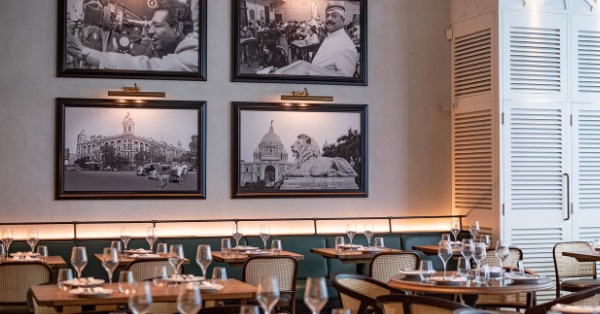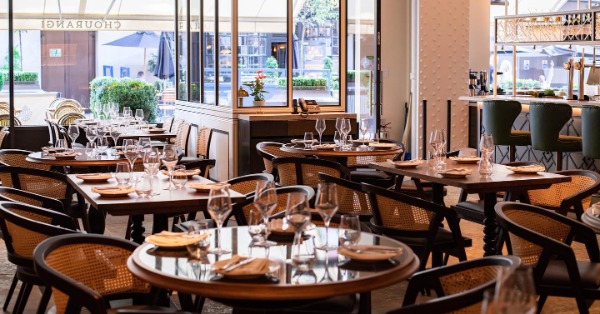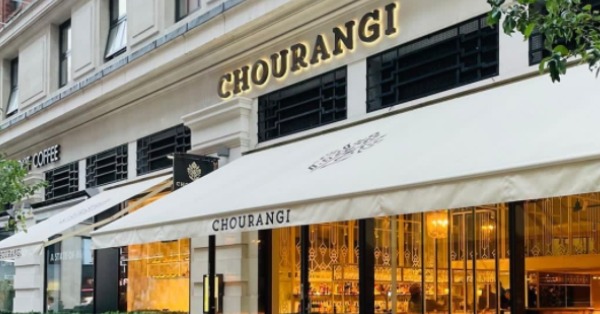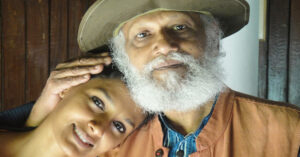Few landmarks in the Western world are more famous than Marble Arch, London. And when two Bengalis decide to become flag-bearers of Kolkata cuisine at the Marble Arch chowrasta, there is much to talk about.
Chourangi, at Quebec Street, is the brain child of Anjan Chaterjee and his friend, the entrepreneur Aditya Ghosh. Oh Calcutta! may have been the obvious name of choice, considering it is the name of Chatterjee’s chain of Bangla/Kolkata cuisine restaurants, but that runs into small difficulties, when in London. Copyright for that name in London is held by a once famous avant-garde play by the same name.
Bengalis in London need but an excuse to stir passions, especially at this time of the year, and what better reason than a restaurant that harks back to Chowringhee, the playground of their youth (at least for some of us)? ‘Chourangi’ has been popping up in every dinner-party conversation, Pujo committee meeting, making its way into Facebook foodie groups and Instagram pages. Everyone knows the best dishes, everyone has someone who can get them a good table and indeed, everyone has become a brand custodian. Chourangi is the community’s collective pride and joy.

George Mikes, in his book How To Be An Alien, had famously remarked, “On the Continent people have good food; in England people have good table manners.” Much has changed since. Immigration continues to be a polarising topic in this country, but consensus is achieved when one discusses the positive influence it has had on the London food scene. Indian restaurants aside, Chourangi faces stiff competition from Arab fare to its left, in the form of Edgeware Road, the magical mehfil of Kurdish, Iranian, Iraqi and Arab food. Marylebone and its many French restaurants are less than stone’s throw away; Mayfair and Soho and its Oriental world at a mile, is just a brisk walk away.
At the Belsize Park/ Hampstead Durga Pujo, feasting continues well after Bijoya. This time around, the venue was Chourangi. Dressed in traditional wear, some twenty of us landed up, promptly marvelling that we finally had a restaurant where we could land up in a sari or a cocktail dress with equal aplomb. An ambience similar to the famous Kolkata clubs but with a hospitality team, thankfully, unlike most clubs. Long before we raised our hand for the fourth time to call out ‘boy’ or ‘koi hai’, a member of the service team glided to our table.

For the next few hours, food coma hit the group. The crackling spinach slivers were the universal favourite. When Bengalis like a dish, they soon figure out the workings of it in their own kitchen. This one left us confounded. Almond and spinach slivers in globules and spherical shapes with a crush. Was this Bengali molecular gastronomy, we wondered?
Laal Murghi Kebab and the Nizami Malai Kebab would have made Wajed Ali Shah, the great gastronome Nawab, proud. The College Street-style Chingri Cutlet and the Mocha’r Chop or mocha croquettes, tugged at every emotion and appetite in the Bengali heart and belly alike.
And those were just the starters. Kamal Kakri Chaat, a chaat made with deep-fried lotus stems, potatoes and a yoghurt-mint and jaggery chutney, was the winner hands down. Delicate flavours gently jostled on the palate with the robustness of the chutneys. I wondered about its place among the Calcutta dishes and promptly decided, like Calcutta, a city that welcomed the Armenians, Greeks and Jews, I should learn to absorb all that is wonderful in food without questioning its origins. The original Tangra style Chilli Paneer was a ‘chhappa mara’ original, of course.
Daab Chingri, or tiger prawn malai curry in a tender coconut shell, is a dish that is hard to describe – when it is average it is delightful, but when it is superb it can change world views. Koraishuti’r Dalna, Kosha Mangsho, aubergine with kasundi and the cloudishly light paneer kebab followed. And just when we thought we were full to capacity, the irresistible aroma of the Kolkata chicken and lamb biriyani wafted in. The ‘deem’ in the biriyani was replaced by tiny quail eggs, in a smart variation. Is the biriyani like Shiraaz or Arsalaan? Perhaps not. Let’s just say it is a London remix of the Kolkata classic.
Now this was the stage, we all decided Chef Jolly and his kitchen staff needed praise and the table broke into impromptu applause. As if egged on by it, the Jolly good Chef, the Instagram alter ego, sent us some heavenly manna in the form of mango bhapa doi, coconut ice cream and pista kulfi on a stick.
When so much praise has been showered, it has to be followed by some constructive advice, the staple after a satisfying Bangali meal. A kulfi needs rose syrup and falooda – the one Ralli’s rendition is the true Kolkata ‘kulpi,’ the rest is just obangali! A Kolkata dessert menu needs some phirni. Bhapa Hilsa is great but what about some paturi? Given that the next generation is dabbling with vegan food, some Echorer Dalna maybe?
Last but not the least, can we have a paper doily under that beautiful white cup of Makaibari tea?




